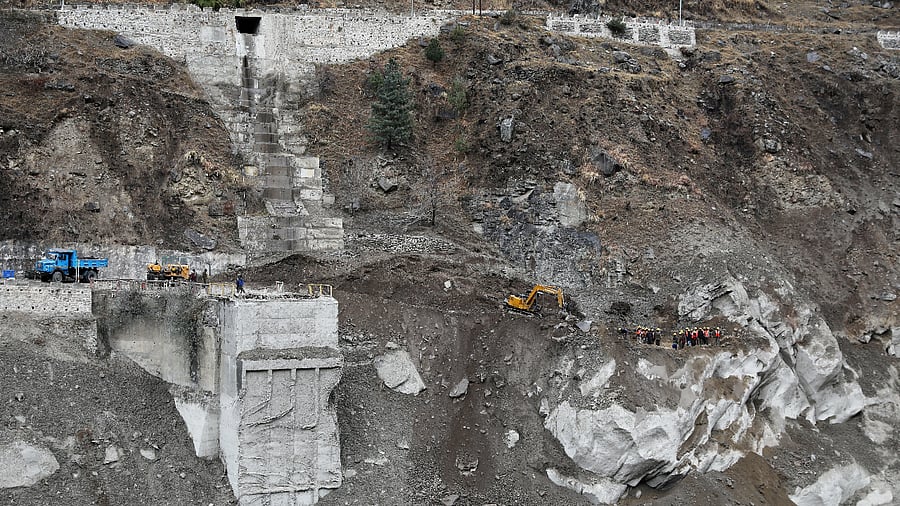
The Uttarakhand killer flood may have started with a massive ice avalanche triggering a landslide downstream and release of 1.6 million cubic metres of water stored in subglacial lakes, according to the scientists, who are putting together the missing pieces of a jigsaw puzzle on what triggered such a massive flash flood in the Himalayas in the middle of winter.
While researchers from Wadia Institute of Himalayan Geology, Dehradun found the evidence of how a massive avalanche began at an altitude of 5,600 mt and came crashing down, veteran glaciologist Anil Kulkarni at the Indian Institute of Science, Bengaluru used modelling studies to propose the existence of subglacial lakes, which probably were breached by the impact.
The assessment by Kulkarni and his colleagues at the Divecha Centre for Climate Change at the IISc suggests that the event may have begun with a massive ice avalanche. It led to a snow avalanche or landslide downstream resulting in the release of 1.6 million cubic mt water stored in one such lake in the Raunthi glacier.
“Subglacial lakes are common phenomena in glaciology. For the water to come out, the glacier need not be broken as there are existing channels below the glacier through which water can come out,” Kulkarni told DH.
The IISc study can also explain the rapid melting of snow and ice accumulated by the series of the avalanches. The amount of latent heat released by such a huge volume of water could aid in melting the ice, which already gathered friction energy after coming downhill.
While satellite images had identified the avalanche as the trigger, scientists at the WIHG picked up evidence from the spot in the last three days to establish the chain of events.
"There was a hanging glacier perched on a huge rock mass, which got snapped in the natural process. The glacier ice mass and the rocks rolled down through a steep gradient of 30-40 degrees gathering strength. It came to Rounthi streamer, which is fed by the glacier and then progressed downhill along with the debris,” Kalachand Sain, WIHG director told DH.
Raunthi glacier is in the catchment area of Rishi Ganga river, which witnessed the killer flood that swept away two hydropower plants.
The scientific opinion, however, differs on the source of such a large volume of water. While Sain did not rule out what Kulkarni proposed, he suggested that the subglacial lake under Raunthi glacier could be one of the sources along with water from the ice melt as well as water in the ice melt and water in the moraine dam lake, if there is one.
"Source of water is a key question on which we need a thorough investigation. Such an investigation is necessary to assess risk from a flash flood as the region has many glaciers with subglacial lakes,” Kulkarni said.

